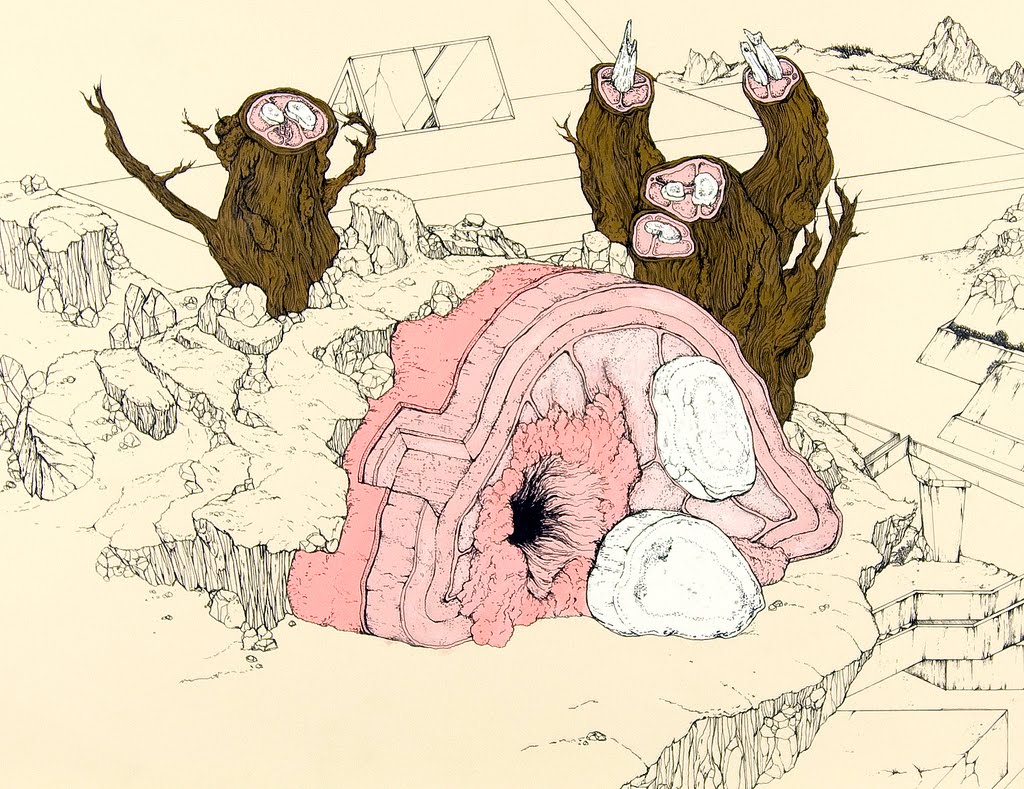FINTE
To determine what I specifically want to illustrate, so that I can illustrate it, here is a definition of probability (http://en.wikipedia.org/wiki/Probability):
Probability is a way of expressing knowledge or belief that an event will occur or has occurred. In mathematics the concept has been given an exact meaning in probability theory, that is used extensively in such areas of study as mathematics, statistics, finance, gambling, science, and philosophy to draw conclusions about the likelihood of potential events and the underlying mechanics of complex systems.
Intentions:
1) Its impossible to demonstrate something completely random because of the constructed (subjective and selective) aesthetic involved in making visual art. Meaning that because I have SELECTED how to represent it, it cant really demonstrate randomness.
2) There exists only finite numbers of possibilities that we can physically experience, party due to the fact that our lives and knowledge is finite and also due to the fact that we can not observe, process and/or conclude massive (or infinite) numbers of events simultaneously.
3) I am going to represent probability within a particular framework to show that parameters in nature (as far as we can understand or explain) do exist . The framework being the aesthetic, which upon observation becomes something visually familiar that introduces and element of predictability.
4) I am going to create a sequence of pictures (12 to 20 depending on the time taken to create them) that can be arranged in any order as long the order is linear, and always match up to a whole image. Behaving like any other pattern, however each re-arrangement is a different picture. The individual pictures will be very similar because of their aesthetic- playing the role of physical parameters.
5) It important that I make this piece interactive so I can provide a means of explaining that estimations and observations are a human interaction. To support what the EPR paper says arguing hat the quantum theory is incomplete: "It can only make statistical predictions on objectively existing physical properties" and in consideration of the statement made by Neils Bohr "It is wrong to think that the task of physics is to find out how nature is. Physics concerns what we can say about nature..."
6) I want for the sequence to be a sort of animation or game that involves re-arranging the different pictures so they make an whole image every time. It would be ideal to program an animation that re-arranges the images at random when you press place and another command that plays them one frame at a time. Shuffling the images at random in every frame which is supposed to represent that in some way the parameters I have mentioned are unpredictable by nature.
NOTE:
I will persist with this plan, although there are a million other things I could choose to illustrate that would be more straight forward and more effective. For example, it would be a more direct approach to this brief to illustrate how bacteria grow and communicate or even the rock cycle or water cycle or the digestive system. Perhaps this approach is a bit too conceptual? Or cryptic? But then again, probability is quite cryptic, although it is much more than a concept.
I am choosing this response for 2 reasons
1) Because of what I will get out of it in technical terms. (I have to do some work in flash.)
2) Because I want to use this year to try things that I have thought about doing before but never had the opportunity to do them- which to me is a definition of making the best out of a situation.
Having said this, to be honest I consider this solution, not entirely effective because it can not stand alone as an image and deliver a direct message to you even though it will be interactive. Bugger.
a) Do I want to approach this question literally and as directly as possible, my definition of illustration being that it is a fundamental and universal form of communication that explains a concept, story or thing.
b) Do I want to use this brief to attempt something that I have wanted to try for a while?
I consider my response a fulfillment of both these things, predominantly the latter, which is why I am choosing this idea. I dont know when else Ill have the time to try it out or learn some flash. I would like to investigate this brief again in the future with more consideration to at point a).
But really, all I am doing is making pictures that can be shuffled into a new one. Not something Ive ever personally tried but not a new idea at all! Here are two examples of illustrations that I have copy and pasted from some other blogs that I think potentially could be used to demonstrate the topic I am doing AND in a similar way:
From Peter Nencini's blog, relevant to probability because of the different cut and paste re-arrangement possibilities of the 'Card Kit' http://peternencini.blogspot.com/
22/05/2009
CARD KIT, CAKE SALE
A Card Collage Kit for my kids' Christmas School Fair last December. The interchangeable modules allow for Pious or Pagan takes on the season. Of course, the children's cut-and-pastes that resulted surpassed my expectation, imagination and ridiculous linear logic. My favourite, consigned to memory, was an apocalyptic reindeer skull.
Similarly this entry about The Tangram is relevant. Where 7 different geometric shapes (that are segments of a square) must be re-arranged into recongnisable forms. By Darryl Clifton from the Camberwell blog: http://camberwelldesign.blogspot.com/
The Tangram is an ancient Chinese game which comprises of seven pieces derived mathematically from a square. The object of the game is to put the pieces together to form something recognisable. The pieces must touch but not overlap, this means that each shape retains its integrity but the whole forms a shape with a specific meaning. Like words in a sentence, almost.














